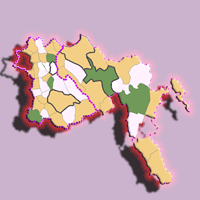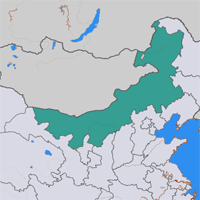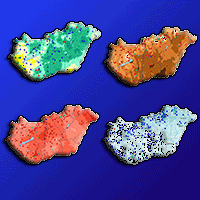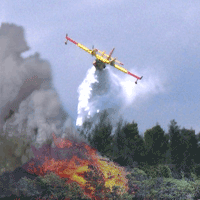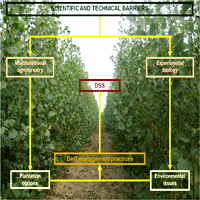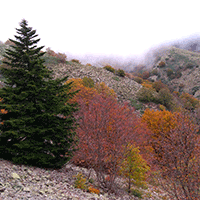
Public perceptions of forests across Italy: an exploratory national survey
Giuseppe Carrus (1) , Angelo Panno (2), Juan Ignacio Aragones (3), Marco Marchetti (4), Renzo Motta (5), Giustino Tonon (6), Giovanni Sanesi (7)
iForest - Biogeosciences and Forestry, Volume 13, Issue 4, Pages 323-328 (2020)
doi: https://doi.org/10.3832/ifor3394-013
Published: Jul 28, 2020 - Copyright © 2020 SISEF
Research Articles
Abstract
In a context of progressive expansion of the Italian forest area, we present the results of a national survey exploring public perception of forests across different geographical scales in Italy. Perceptions of forests are assessed in relation to popular beliefs on relevant environmental issues such as countering climate change, protecting biodiversity, and promoting social cohesion and environmental education. Participants (N = 1059) living in five different regions of Northern (Trentino-Alto Adige/Südtirol, Piemonte), Central (Lazio, Molise) and Southern Italy (Puglia), were recruited in the survey and completed a paper-and-pencil questionnaire. Survey questions regarded the estimated percentage of forest cover, the perceived importance of different environmental issues and of different material and non-material forest products, as well as participants’ perceptions regarding connectedness to nature. Results revealed a generalized tendency to overestimate the extension of forest surface area in the participants’ region, in Italy, and in the European Union. Results also showed high scores for participants’ perceived importance of environmental issues, such as climate change and biodiversity protection, and in their belief that forests could play a positive role in addressing these issues and providing important outcomes and benefits for the quality of human life, such as health and well-being or social cohesion.
Keywords
Forest Perceptions, Nature Experience, Environmental Attitudes, Environmental Issues
Authors’ Info
Authors’ address
European University of Rome, Department of Human Science, Rome (Italy)
Complutense University of Madrid, Department of Psychology, Madrid (Spain)
University of Molise, Dipartimento di Bioscienze e Territorio (Italy)
University of Turin, Dipartimento di Scienze Agrarie, Forestali e Alimentari, Turin (Italy)
Libera Università di Bolzano, Facoltà di Scienze e Tecnologie, Bolzano (Italy)
University of Bari Aldo Moro, Department of Agro-environmental and Territorial Sciences, Bari (Italy)
Corresponding author
Paper Info
Citation
Carrus G, Panno A, Aragones JI, Marchetti M, Motta R, Tonon G, Sanesi G (2020). Public perceptions of forests across Italy: an exploratory national survey. iForest 13: 323-328. - doi: 10.3832/ifor3394-013
Academic Editor
Marco Borghetti
Paper history
Received: Mar 06, 2020
Accepted: Jun 08, 2020
First online: Jul 28, 2020
Publication Date: Aug 31, 2020
Publication Time: 1.67 months
Copyright Information
© SISEF - The Italian Society of Silviculture and Forest Ecology 2020
Open Access
This article is distributed under the terms of the Creative Commons Attribution-Non Commercial 4.0 International (https://creativecommons.org/licenses/by-nc/4.0/), which permits unrestricted use, distribution, and reproduction in any medium, provided you give appropriate credit to the original author(s) and the source, provide a link to the Creative Commons license, and indicate if changes were made.
Web Metrics
Breakdown by View Type
Article Usage
Total Article Views: 40116
(from publication date up to now)
Breakdown by View Type
HTML Page Views: 34420
Abstract Page Views: 2833
PDF Downloads: 2205
Citation/Reference Downloads: 6
XML Downloads: 652
Web Metrics
Days since publication: 1967
Overall contacts: 40116
Avg. contacts per week: 142.76
Citation Metrics
Article Citations
Article citations are based on data periodically collected from the Clarivate Web of Science web site
(last update: Mar 2025)
Total number of cites (since 2020): 8
Average cites per year: 1.33
Publication Metrics
by Dimensions ©
Articles citing this article
List of the papers citing this article based on CrossRef Cited-by.
References
Go greener, feel better? The positive effects of biodiversity on the well-being of individuals visiting urban and peri-urban green areas. Landscape and Urban Planning 134: 221-228.
CrossRef | Gscholar
A different way to stay in touch with “urban nature”: the perceived restorative qualities of botanical gardens. Frontiers in Psychology, 8.
CrossRef | Gscholar
Elucidating the changing roles of civil society in urban sustainability transitions. Current Opinion in Environmental Sustainability 22: 41-50.
CrossRef | Gscholar
Health benefits of nature experience: psychological, social and cultural processes. In “Forests, Trees and Human Health” (Nilsson K, Sangster M, Gallis C, Hartig T, De Vries S, Seeland K, Schipperijn J eds). Springer, Dordrecht, The Netherlands, pp. 127-168.
CrossRef | Gscholar
Valuation theory: an environmental, developmental and evolutionary psychological approach. Implications for the field of environmental education. Journal of Educational, Cultural and Psychological Studies (ECPS) 16: 77-97.
CrossRef | Gscholar
A forest journey: the role of wood in the development of civilization. Harvard University Press, Cambridge, USA, pp. 446.
Gscholar
Quality of life and sustainability: the end of quality at any price. In “Handbook of Environmental Psychology and Quality of Life Research” (Fleury-Bahi G, Pol E, Navarro O eds). Springer International, Cham, Switzerland, pp. 11-39.
Gscholar




